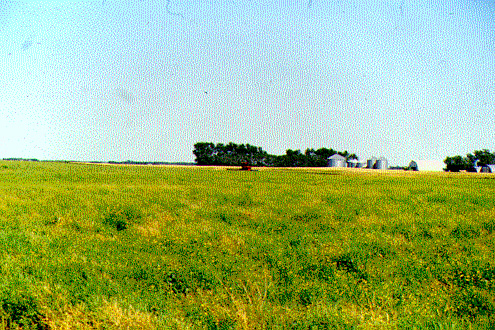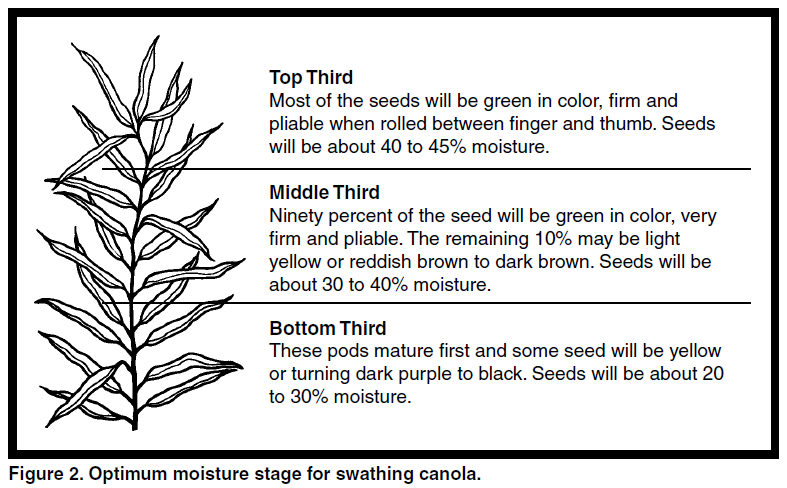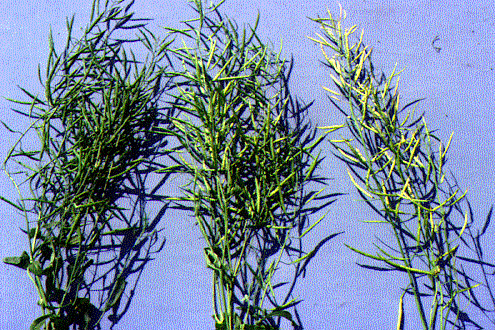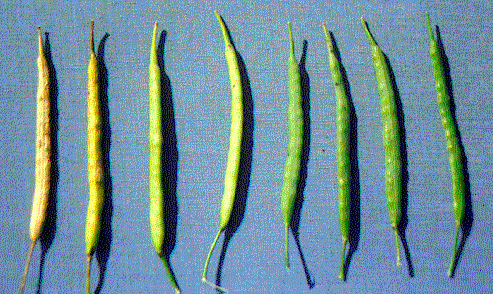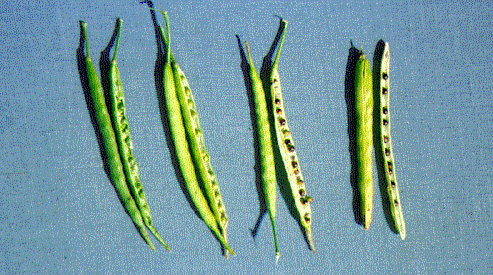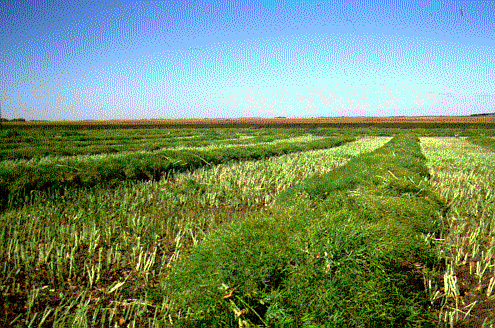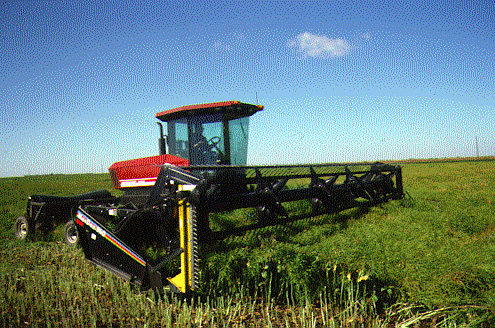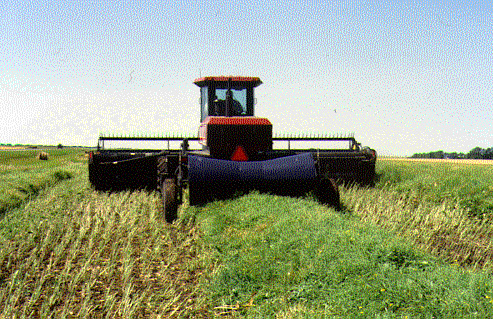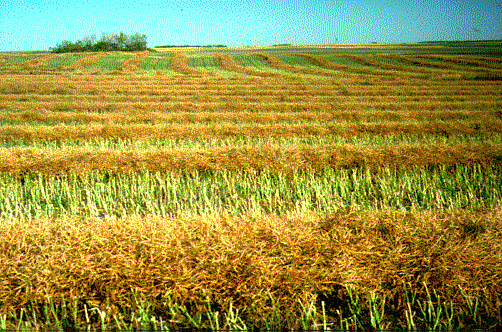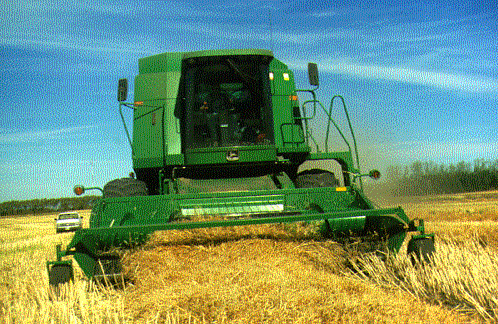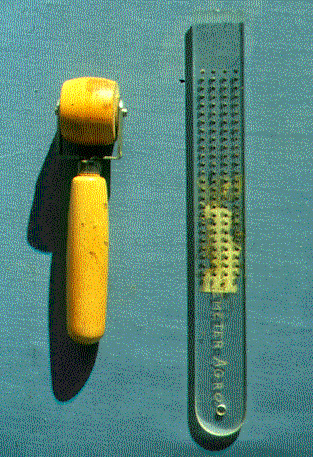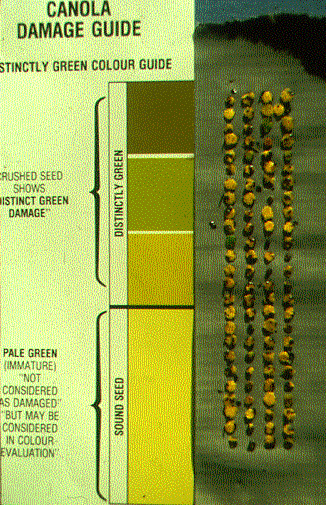Swathing canola at the optimum stage of ripening reduces green seed problems and seed shatter losses and ensures the quality required for top grades and prices.
Inspect fields every two to three days when some color change occurs in the first formed pods on the bottom of the main stem.
To determine when a field of canola is ready to swath (Figure 1), examine plants from different parts of the field. The stage of maturity in an evenly maturing field will vary from plant to plant and area to area in the field. When examining the plants, take into account varying soil types, low-lying areas, available soil moisture and exposed early ripening areas.
Figure 1. Canola field ready to swath.
Examine only those pods on the main stem (Figure 2). Seeds in pods on the bottom third of the main stem were formed earlier and will turn color much sooner than seeds in the pods on the top third of the plant.
Figure 2. Optimum moisture stage for swathing canole.
When the overall moisture content of seed from the total plant averages 30 to 35%, about 30 to 40% of the seeds in pods on the main stem will have changed color or have started to change color. Seeds with only small patches of color should be counted as color changed. Remember, the color of the seed is more important than the overall color of the field in determining the stage of maturity (Figures 3 to 6).
Figure 3. Plants at various maturity stages.
Figure 4. Change in pod maturity.
Figure 5. Change in pod and seed maturity.
Figure 6. Seed color and maturity changes.
Most of the seeds that have changed color will be from the bottom third of the stem. When seeds in the bottom pods slightly turn color, seeds in the top, last-formed pods are filled or nearly filled. At this time, most of the seeds will be firm and roll, as opposed to break, when pressed between the forefinger and thumb.
Seeds in all pods on a plant complete filling (physiological maturity) at about 40% moisture and then slowly turn from green to light yellow, reddish brown, brown or black, depending on the hybrid. In hot (90 F), dry weather, canola seed can go from 10 to 50% seed color change in just four to five days or less. Once filled, seeds rapidly lose moisture at about 2 to 3% or more each day, depending on the weather.
Swathing early can be beneficial if a hard fall frost is expected. Frost fixes the chlorophyll or green color in immature seed, making it difficult to remove during processing.
Fall frosts rarely freeze to ground level. A swathed crop will not only lie below the coldest night temperatures, but much of the seed will benefit from the insulating properties of the swath and residual soil heat, preventing or reducing frost-fixed chlorophyll.
